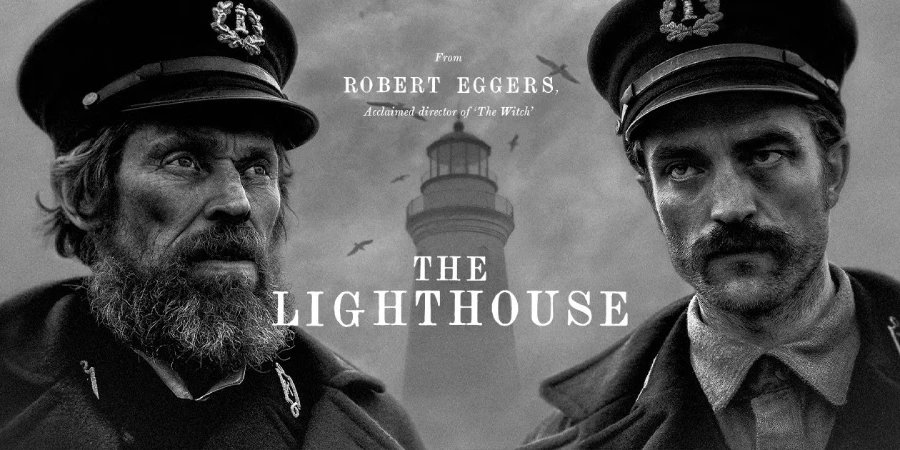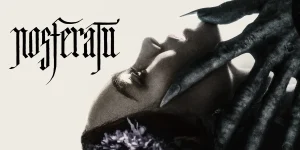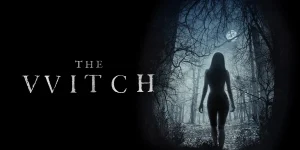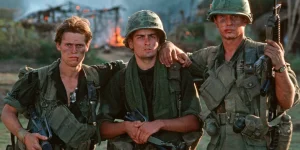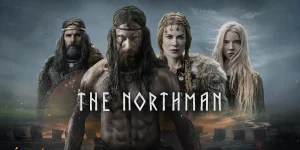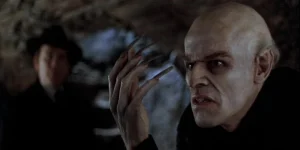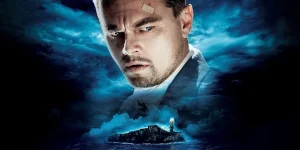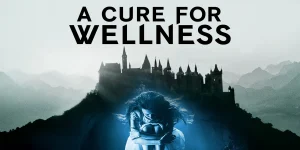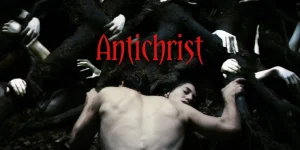Robert Eggers’ The Lighthouse is a psychological horror masterpiece drenched in madness, myth, and isolation. Shot in stark black and white and presented in a claustrophobic aspect ratio, the film is equal parts nightmare and allegory. Let’s break it down in detail.
Table of Contents
ToggleDetailed Summary
The Arrival
Two lighthouse keepers, Thomas Wake (Willem Dafoe) and Ephraim Winslow (Robert Pattinson), arrive on a remote New England island in the late 19th century. Wake is the grizzled veteran, superstitious and authoritarian, while Winslow is the younger, quieter “wickie” (assistant keeper) looking for work. Immediately, Wake asserts dominance, demanding Winslow handle all the menial and backbreaking labor while reserving access to the lighthouse lamp for himself.
The Routine and Tension
The men fall into an exhausting daily routine: Winslow hauls coal, cleans, paints, and battles the relentless storm winds. Wake drinks heavily, recites sea-dog superstitions, and frequently belittles his partner. Tension builds as Winslow grows increasingly frustrated at his lack of access to the lamp, which Wake seems to guard like a jealous lover.
Strange Occurrences
Winslow begins to see unsettling visions—kelp-covered logs floating in the sea, strange tentacled creatures, and a mysterious mermaid who both terrifies and seduces him. A dead gull also torments him until he kills it violently, which Wake warns will bring bad luck. Soon after, a ferocious storm batters the island, cutting off supplies and trapping them long past their scheduled departure.
Descent into Madness
As food and rations dwindle, both men spiral. They drink themselves into stupors, veer between friendship and hostility, and suffer increasingly bizarre hallucinations. Winslow confesses that “Ephraim Winslow” is not his real name; he is actually Thomas Howard, a man who let a coworker die back in Canada and assumed his identity. The power dynamic shifts constantly—sometimes Winslow dominates, sometimes Wake—and the line between reality and delusion blurs.
Movie Ending
In the climax, Winslow discovers Wake’s logbook, where his superior has written damning reports suggesting he should be fired without pay. Furious, Winslow attacks Wake, beating him savagely and forcing him to crawl on all fours like a dog before burying him alive. But Wake doesn’t die easily—he appears again, bloodied and monstrous, trying to kill Winslow. Winslow ultimately defeats him and ascends to the lantern room.
At last, Winslow opens the light chamber and gazes directly into the lamp. Whatever he sees fills him with ecstasy and horror—he laughs, screams, and is engulfed by blinding light. The next shot cuts to him lying naked on the rocks, his body being pecked apart by gulls, his entrails spilling out. It’s a nightmarish, ambiguous conclusion: did he really gain forbidden knowledge, or did he simply go mad and meet a violent end? The film leaves it unanswered, leaning heavily into mythological parallels (Prometheus stealing fire from the gods, punished for eternity).
Are There Post-Credits Scenes?
No, The Lighthouse does not have any post-credits scenes. Once the harrowing final image fades, the story is over.
Type of Movie
The Lighthouse is a psychological horror/drama with elements of folk horror, mythological allegory, and dark comedy. It’s atmospheric, unsettling, and deliberately ambiguous, leaning on mood and symbolism more than traditional scares.
Cast
- Willem Dafoe as Thomas Wake
- Robert Pattinson as Ephraim Winslow / Thomas Howard
(These two are the only real characters; the mermaid and other figures exist as hallucinations or visions.)
Film Music and Composer
The score was composed by Mark Korven, who also worked with Eggers on The Witch. The soundtrack uses droning foghorns, deep percussion, and unsettling industrial tones to blur the line between music and sound design, amplifying the sense of madness and claustrophobia.
Filming Locations
The film was shot in Cape Forchu, Nova Scotia, Canada, where a full-scale lighthouse set was constructed specifically for the movie. The location’s brutal weather, crashing waves, and harsh cliffs were not just a backdrop but an active force shaping the performances—many of the storms seen on screen are real.
Awards and Nominations
- Academy Award Nomination: Best Cinematography (Jarin Blaschke)
- Independent Spirit Awards: Willem Dafoe won Best Supporting Male
- Cannes Film Festival: FIPRESCI Prize, Directors’ Fortnight
- Multiple critics’ groups praised it for cinematography, acting, and atmosphere.
Behind the Scenes Insights
- Eggers insisted on historical authenticity: dialogue was written using 19th-century sailor journals and authentic dialect research.
- The actors endured harsh weather; many scenes were shot in freezing rain and powerful winds.
- Robert Pattinson reportedly isolated himself from the crew between takes to remain in character.
- Willem Dafoe refused to break character and rehearsed his long monologues intensely, even when lying on the floor buried in dirt.
Inspirations and References
- Based loosely on a real story of two Welsh lighthouse keepers in the 1800s who went mad during a storm.
- Inspired by Prometheus and other Greek myths about punishment and forbidden knowledge.
- Influenced by classic horror literature, particularly Edgar Allan Poe (Eggers originally planned to adapt Poe’s unfinished story The Light-House).
- Stylistically, it nods to silent films, German Expressionism, and maritime folklore.
Alternate Endings and Deleted Scenes
While no official alternate ending has been released, Eggers has stated that earlier drafts leaned more heavily into supernatural explanations (such as actual sea monsters) before he chose to leave it more ambiguous. Some extended hallucination sequences were cut for pacing.
Book Adaptations and Differences
The film is not a direct adaptation of a novel but draws heavily from Edgar Allan Poe’s fragment “The Light-House” and maritime lore. Unlike Poe’s version, Eggers created a psychological battle of wills, rooted in mythological allegory rather than ghostly hauntings.
Memorable Scenes and Quotes
Key Scenes
- Winslow killing the gull, triggering the storm.
- The drunken dancing and brawling sequence where their relationship teeters between intimacy and violence.
- Wake cursing Winslow with a biblical, sea-god-like monologue.
- The surreal moment of Winslow staring into the light at the climax.
Iconic Quotes
- Wake: “Hark! Triton! Hark! Bellow, bid our father the sea king rise from the depths…”
- Winslow: “I ain’t never intended to be no housewife, and I don’t intend to start now!”
- Wake (to Winslow): “Ye’re fond of me lobster, ain’t ye?”
Easter Eggs and Hidden Details
- The seagulls represent souls of dead sailors, according to nautical folklore.
- The film’s aspect ratio (1.19:1) mimics early cinema and creates a boxed-in, suffocating atmosphere.
- The lantern and forbidden light are visual metaphors for the Prometheus myth.
- The frequent images of tentacles and sea gods nod to Lovecraftian horror.
Trivia
- The “foghorn” in the film is a mix of a real foghorn and specially designed sound effects.
- The set was built from scratch because no suitable lighthouse location existed.
- Pattinson nearly came to blows with Eggers during filming due to the physically extreme direction, though they reconciled.
Why Watch?
If you’re into psychological horror that blends myth, folklore, and madness rather than simple jump scares, The Lighthouse is an unforgettable experience. It’s disturbing, ambiguous, and visually stunning—a film that will linger with you long after it ends.

